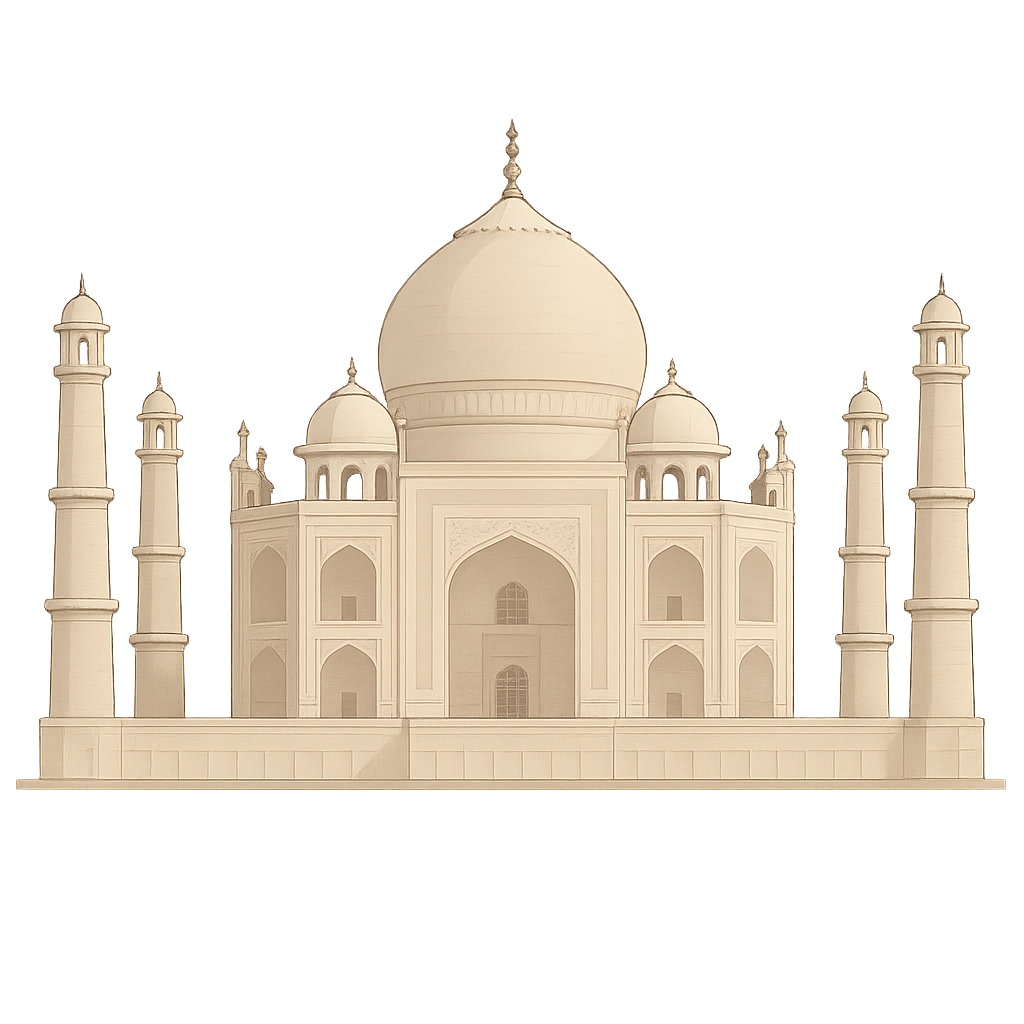The Story of the Taj Mahal
Every morning, the sun gently wakes me, kissing my white marble walls until I glow with a soft, pink light. Before me lies a long, still pool of water that acts as a perfect mirror, showing my shimmering reflection to the sky. At each of my four corners, a tall, slender tower stands like a loyal guard, watching over me day and night. I am surrounded by lush green gardens where fountains whisper secrets to the wind and the air is sweet with the scent of flowers. I sit peacefully on the banks of the Yamuna River in a country called India, a silent testament to a great love. I am the Taj Mahal.
My story begins not with stones and jewels, but with a deep love between an emperor and his queen. Long ago, in the 1600s, the Mughal emperor Shah Jahan ruled this land. His favorite wife, the one he loved more than anything, was named Mumtaz Mahal. They were inseparable, and the emperor’s heart belonged completely to her. But one day, a great sadness fell over the kingdom. In the year 1631, Mumtaz Mahal passed away. The emperor was so heartbroken that the whole world seemed to lose its color. He promised his beloved wife that he would build the most beautiful tomb the world had ever seen, a place where their love could live forever. In 1632, the great work began. More than 20,000 artisans—carvers, painters, and builders—came from all over the empire to help create me. Giant elephants, strong and steady, helped carry the gleaming white marble from hundreds of miles away. For over 20 years, they worked tirelessly, finally completing me around 1653. I was built from a promise, a monument made of marble and love.
I am not just a building; I am a palace of wonders, designed with perfect care. If you were to draw an imaginary line down my very center, you would find that both sides are exactly the same. This is called symmetry, and it makes me feel balanced and peaceful. My walls are not plain. They are covered in delicate carvings of flowers and vines that seem to grow right out of the marble. Verses from the holy book, the Quran, are written in beautiful, flowing script called calligraphy around my grand archways. But the biggest surprise is when you look closely. Thousands of precious gems and stones, like green jade, blue lapis lazuli, and orange carnelian, were carefully cut and inlaid into my marble walls to create sparkling patterns. This amazing art is called pietra dura. The gardens that surround me were designed to be a symbol of paradise on Earth, a place of peace and beauty for all who visit.
Although my story began with the sadness of a king, I have since become a beacon of hope and beauty for the entire world. I am no longer just a tomb for a queen; I am a symbol of everlasting love that everyone can understand, no matter what language they speak. Each year, millions of people from every corner of the globe travel to see me. I watch their faces light up with wonder as they walk through my gates and see me for the first time. I am a reminder that even from great sorrow, something beautiful and lasting can be created. I stand to inspire awe, to connect people from all cultures, and to shine as a jewel of India and a treasure for the whole world. My story is proof that love is the greatest architect of all.
Reading Comprehension Questions
Click to see answer
